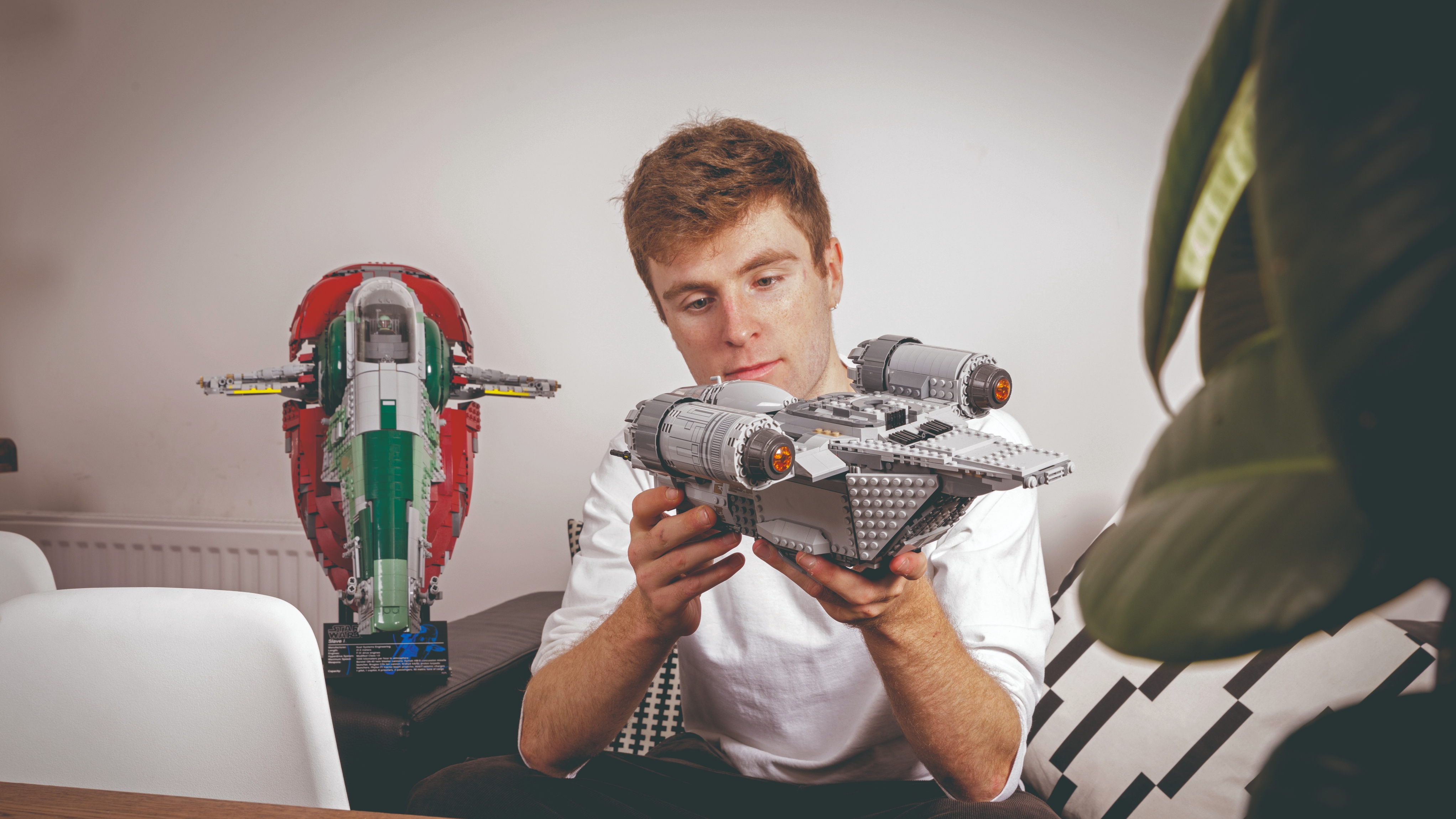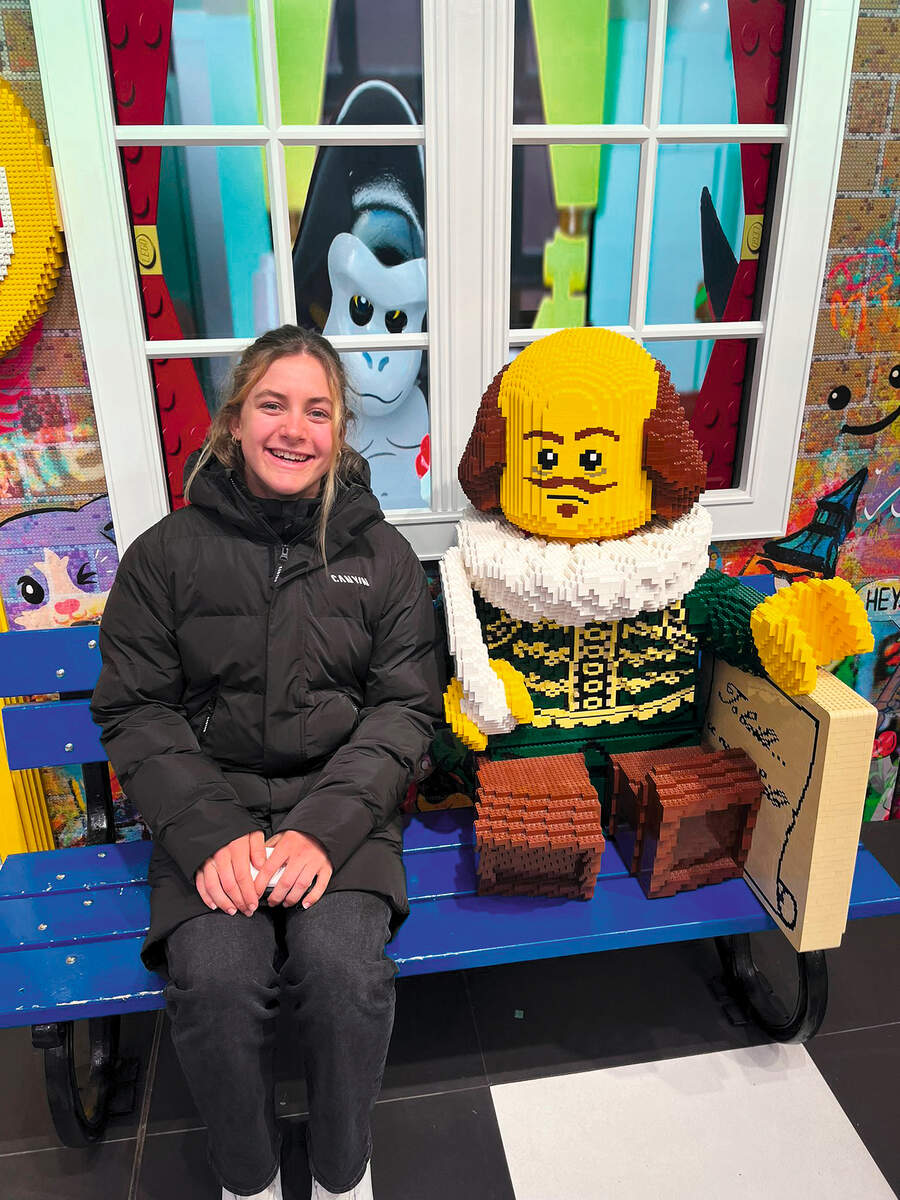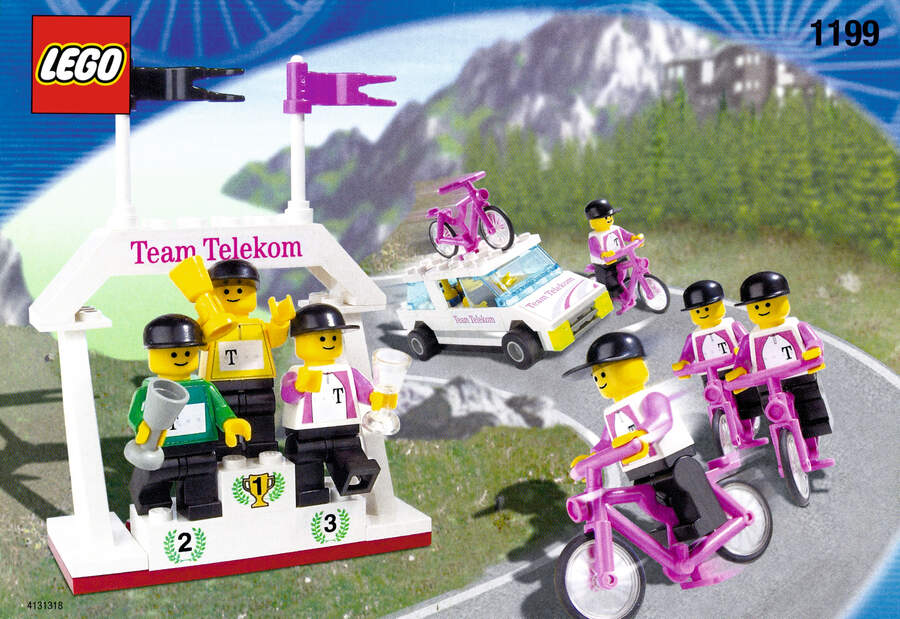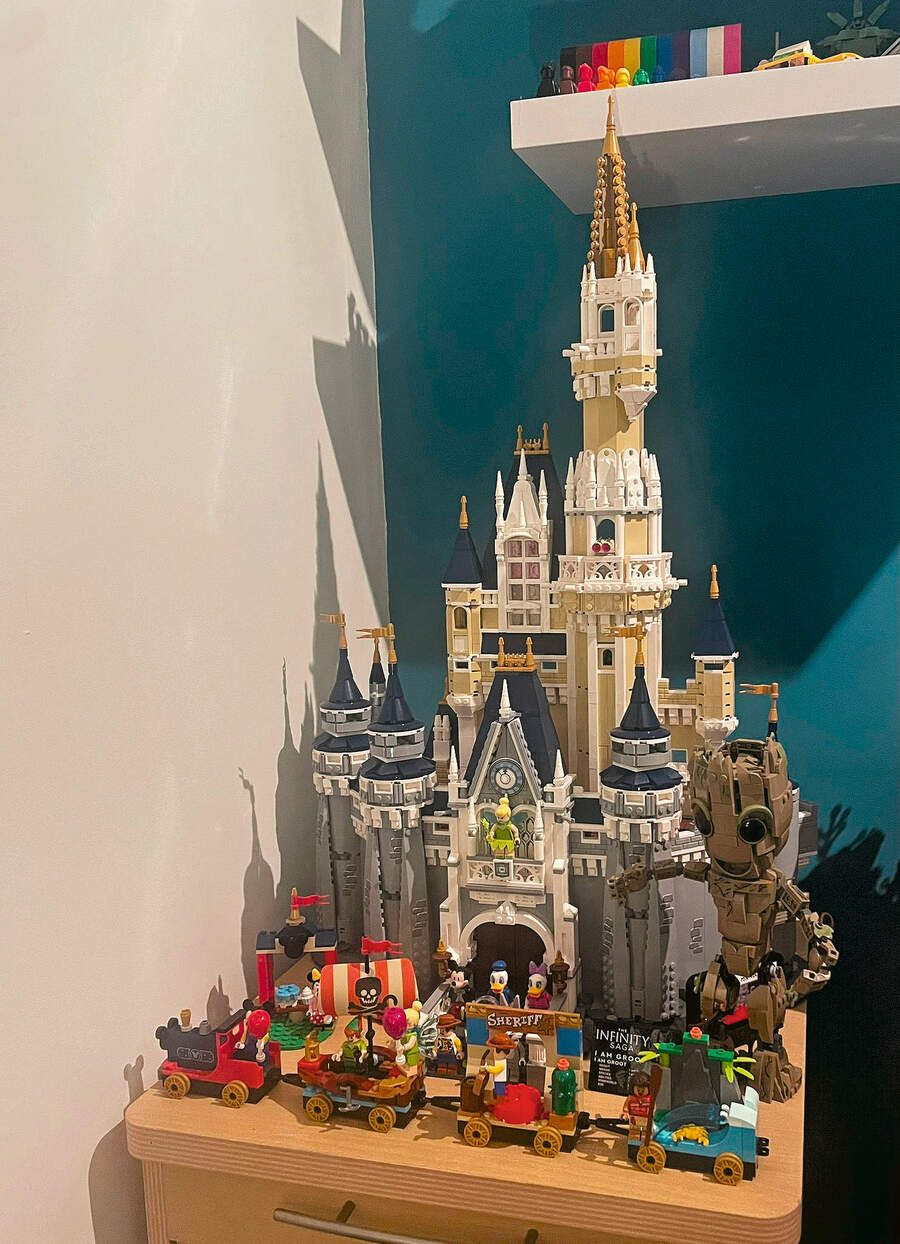'I broke my collarbone and bought a Lego Millienium Falcon': The cyclists who love building blocks
Ever wondered what the pros do to wind down? We look at why Lego has clicked with cycling's movers and shakers

He’s won national titles on the track and road, and challenged for stage wins at the Tour de France, but there’s still one prize Fred Wright has his eye on. “It was always the Millennium Falcon,” he says when we ask him what Lego set he’s always lusted after. “To have the massive Millennium Falcon is pretty cool. But I tell myself, I’ve got to have a reason to buy it.”
Wright is one of a surprisingly large number of pro riders and coaches who are Adult Fans of Lego (AFOLs), the child’s construction toy. Perhaps even more surprisingly, there seem to be some tangible benefits to building for those whose lives are dominated by sport.
Mark Cavendish is probably the highest-profile, telling the BBC’s Joe Wicks Podcast in 2020: “It’s quite a mundane task… You just sit there and you do it… I think it uses the same part of your brain that’s used for meditation.”
Stress-buster

To build, or not to build... that is the question
Rising star Zoe Bäckstedt of Canyon-SRAM is another Lego fan. “It’s a relaxing thing for me just being able to come home from a race weekend, to put some music on and turn my phone off for a bit and just build. You watch the process of it being put together and just enjoy the time away from social media and everything like that, just having some time to myself,” says Bäckstedt, extolling the meditative virtues of a task that requires some focus, but not too much.
Wright adds: “It’s like I quite enjoy building some Ikea furniture. It’s not that difficult to do.”
“It’s the one thing that makes me switch off from work,” explains EF Pro Cycling performance manager Emma Trott, who as British Cycling’s junior women’s coach introduced Bäckstedt to the joy of the bobbled bricks. “I don’t think about anything cycling-related when I’m building. I love my job and thinking about all the little tweaks that we can make, but it’s not healthy to do it all the time.”
She adds: “As coaches and riders we’re quite hands-on people. You like to feel like you’re making a difference and I think that’s the same with Lego. Lego is a switch-off but you’re still having to follow a procedure.”
Get The Leadout Newsletter
The latest race content, interviews, features, reviews and expert buying guides, direct to your inbox!
For Wright’s friend and rider with British Cycling, Rhys Britton, the allure of the plastic bricks started as a way of coping with the kind of adversity many sports people face. “In lockdown I had an injury. I broke my collarbone in 2019 at the Ghent Six and I got back into it then. I had nothing else to do, so I bought the Millennium Falcon and built that while I was injured” – we’re sure Wright wasn’t the least bit jealous – “then I went home for a bit and dug out all my old Lego and rebuilt it.”
He adds: “When things aren’t going so well it’s easy to buy a bit of Lego and build it and then at the end you have something cool.”
Lego therapy

In recent years there has been an increasing use of Lego as a quasi-therapeutic tool in this way. Self help author Abbie Headon even released a book called Build Yourself Happy with the corporation’s seal of approval.
If that sounds fanciful it’s worth noting that it’s far from the first time the toy has been used outside of its intended context. In 2004 a study in the Journal of Autism and Developmental Disorders found autistic spectrum children’s interaction with peers improved when using Lego. Plus, since the mid-1990s it’s been used to help facilitate business solutions planning.
Not that pro riders are thinking about any of that, they’re just concerned with where the next brick goes. Bäckstedt adds: “If I could take Lego to a stage race with me and build like, one bag each day, I would absolutely do that. But getting it home is an absolute nightmare.”
Bäckstedt is fastidious with her Lego, saying she keeps all the instructions and notes written down, the date she completed a set and what number it was: “I’m on set number 17 at the moment.”
Bäckstedt’s model home
Not that there’s a lot of space at home where she is able to bring builds back from a stage race. Trott gave Bäckstedt her first Lego set, a McLaren F1 car (set number: 42141) as a house-warming gift. “It’s spiralled from there, now she’s got the Lego flowers [10280], because you can’t kill those when she’s at a race. He house always looks good without the need to worry about coming back to something dead,” says Trott.
Bäckstedt later reels off an audio tour of her Belgian Lego palace including the Disney Castle (43222) in her lounge, the Rolling Stones’ tongue (31206) and a Japanese Castle (1170) in her bathroom. “I like the artwork because it can go on the wall. I choose my Lego sets by where in the house needs Lego,” she says.
Wright can only dream. “I think my girlfriend finds it a bit embarrassing,” he says a little sheepishly. “But I don’t know… we’ve got to have some kind of hobby! I’m just looking forward to – and I don’t know what Emma [Wright’s girlfriend] thinks about this – but just putting it all in a room in my house.”
Team-training tool

Trott uses her impressive handiwork as a backdrop for video calls
For Trott, the display of her collection has some benefits for her work as a coach. “My office space is where all my Lego is, so when I’m on a team [video] call that’s my backdrop. If you have a new person that’s not spoken to you before, it’s a good icebreaker because they can see it. Hogwarts Castle [71043] is directly above my head, and they’ll be like, ‘Is that Hogwarts?’ And then it just rambles from there,” she explains. She says it’s partly responsible for her knowing a whole network of staff at BC who are into Lego.
She’s even used it for team-building exercises. When the 2022-23 intake of juniors arrived at the BC Academy she set them a building race between two teams.
“You have to take it piece-by-piece over to your team-mate, who can’t see the instructions, and clearly and concisely tell them where that brick needs to go.
“This is because when you’re in a race – say, you’re in a Madison – you get one chance every two laps or so, to communicate,” she says, clapping her hands together to indicate the urgency.
Building motivation
Talking to these riders, Lego’s appeal is its mechanical, repetitive and mildly mentally taxing nature rather than any creative aspect. Plus, it’s aff ordable on a young pro’s salary. “I haven’t upgraded my car as a pro but I have bought a couple of Lego sets,” says Wright.
Also, setting goals and rewarding oneself is a motivational tool. Bäckstedt, who reveals she’s talked herself out of a few purchases in recent months, even has her next one lined up. “If I can get on a podium somewhere at the CX Worlds then maybe I’m treating myself to the Avengers Tower [76269].” As for Wright, if he lands that big pro win, you know he’ll be ordering Lego set 75192.
A brief history of cycling and Lego

Hailing from one of cycling’s traditional heartlands, Denmark, it didn’t take Lego long to start making tiny toy bikes. The first Lego set to feature them was number 270 in 1958. It was made shortly after the introduction of the Lego system – the studs that allow bricks to connect to each other – which was introduced in 1955, and standardised the size and shape of Lego we know today. But the almost as famous minifigure was two decades away and so the bikes and riders that were part of the set look much like something from a typical toy farm or garage.
The bike design that persists to this day, and can be used with the now ubiquitous Lego people, was first seen in 1985 in several sets that year including 'weekend home', 'post office' and 'telephone booth'. It’s worth noting that no Lego bike has ever had drop handlebars, one presumes because reaching for the drops would put the minifigure in a position where they are looking at the floor. That’s relevant because come 2000 with the Olympics in Sydney on the horizon, Lego produced a series of sports-related sets. Four of them featured the Team Telekom pro racing team, complete with pink bikes, released to coincide with that year’s Tour de France, which passed through Germany.
“We were a little bit surprised, because nobody had seen that coming. But we also didn’t really see how big it was at that time,” recalls Bora-Hansgrohe sports director Rolf Aldag, who was riding for the team at the time. He says he was one of those on the team with kids that got a set given to them.
One (set number 1199) came complete with yellow and green jersey wearers – we assume the latter was meant to be Erik Zabel, who won the points classification at the Tour as a Telekom rider the year before. Aldag says there were a few jokes on the team bus about the body shape of the squad’s leaders.
The figures saw plenty of action: “At my wedding, somebody prepared those Lego figures in a scenario of a team wedding. My daughter played with them. But after moving six times, shoot me if you ask me where they are.” The Telekom branding on the riders’ kits was, unfortunately, applied with stickers (not popular with the Lego fan community) and so any that remain complete are likely to be desirable. Lego hasn’t returned to the Tour de France but has since produced mountain biking sets (40582), bicycle police (30638) and a BMX park (60364).
“It should make us a little bit proud that we were the only ones and that at that time people would give Lego models in Telekom jerseys to their children to play with,” says Aldag

Thank you for reading 20 articles this month* Join now for unlimited access
Enjoy your first month for just £1 / $1 / €1
*Read 5 free articles per month without a subscription

Join now for unlimited access
Try first month for just £1 / $1 / €1
Having trained as a journalist at Cardiff University I spent eight years working as a business journalist covering everything from social care, to construction to the legal profession and riding my bike at the weekends and evenings. When a friend told me Cycling Weekly was looking for a news editor, I didn't give myself much chance of landing the role, but I did and joined the publication in 2016. Since then I've covered Tours de France, World Championships, hour records, spring classics and races in the Middle East. On top of that, since becoming features editor in 2017 I've also been lucky enough to get myself sent to ride my bike for magazine pieces in Portugal and across the UK. They've all been fun but I have an enduring passion for covering the national track championships. It might not be the most glamorous but it's got a real community feeling to it.
-
 'I'll take a top 10, that's alright in the end' - Fred Wright finishes best of British at Paris-Roubaix
'I'll take a top 10, that's alright in the end' - Fred Wright finishes best of British at Paris-RoubaixBahrain-Victorious rider came back from a mechanical on the Arenberg to place ninth
By Adam Becket Published
-
 'This is the furthest ride I've actually ever done' - Matthew Brennan lights up Paris-Roubaix at 19 years old
'This is the furthest ride I've actually ever done' - Matthew Brennan lights up Paris-Roubaix at 19 years oldThe day's youngest rider reflects on 'killer' Monument debut
By Tom Davidson Published